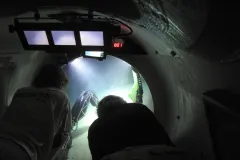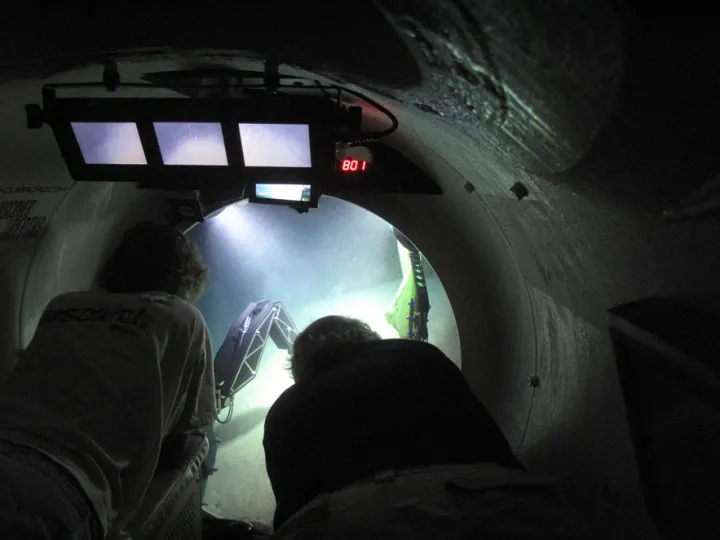Diving for Crabs in the Deep Sea

Last week, Smithsonian research zoologists Dr. Jerry Harasewych and Dr. Martha Nizinski were in Curaçao looking for deep-sea marine gastropods and decapod crustaceans, respectively. I learned they both previously used the Johnson-Sea-Link I and II to conduct their research. The Johnson-Sea-Link is a research submersible that became operational in the early 1970's.
Although Harasewych and Nizinski have used research submersibles extensively in other parts of the Caribbean and western Atlantic, they were excited to be a part of the Deep Reef Observation Project (DROP) and use the Curasub to explore the waters off Curaçao.
On our first dive, we headed east along the coast and down, of course. We descended along a vertical wall and reached the silty bottom 30 minutes later. We were at a depth of 243 meters (about 800ft, or the height of a 63-story building).
It is possible for sunlight to reach this part of the ocean, which is called the “twilight zone.” But on this cloudy afternoon, it was completely dark. Good thing the Curasub has external lights! The sub lights only illuminated an area a few meters in front of us (see photo), but that was enough for us to view the habitat.
The lunar-like landscape around us appeared uninhabited, until we saw a few small pieces of wood lying in the silt. Watch the interview with Martha Nizinski to learn about her research interests and to see what we found when we took a closer look at this small piece of sunken wood.
Editor's Note: This is the third post in our "Summer in a Sub" blog series, which features the work of the Smithsonian's Deep Reef Observation Project (DROP).


